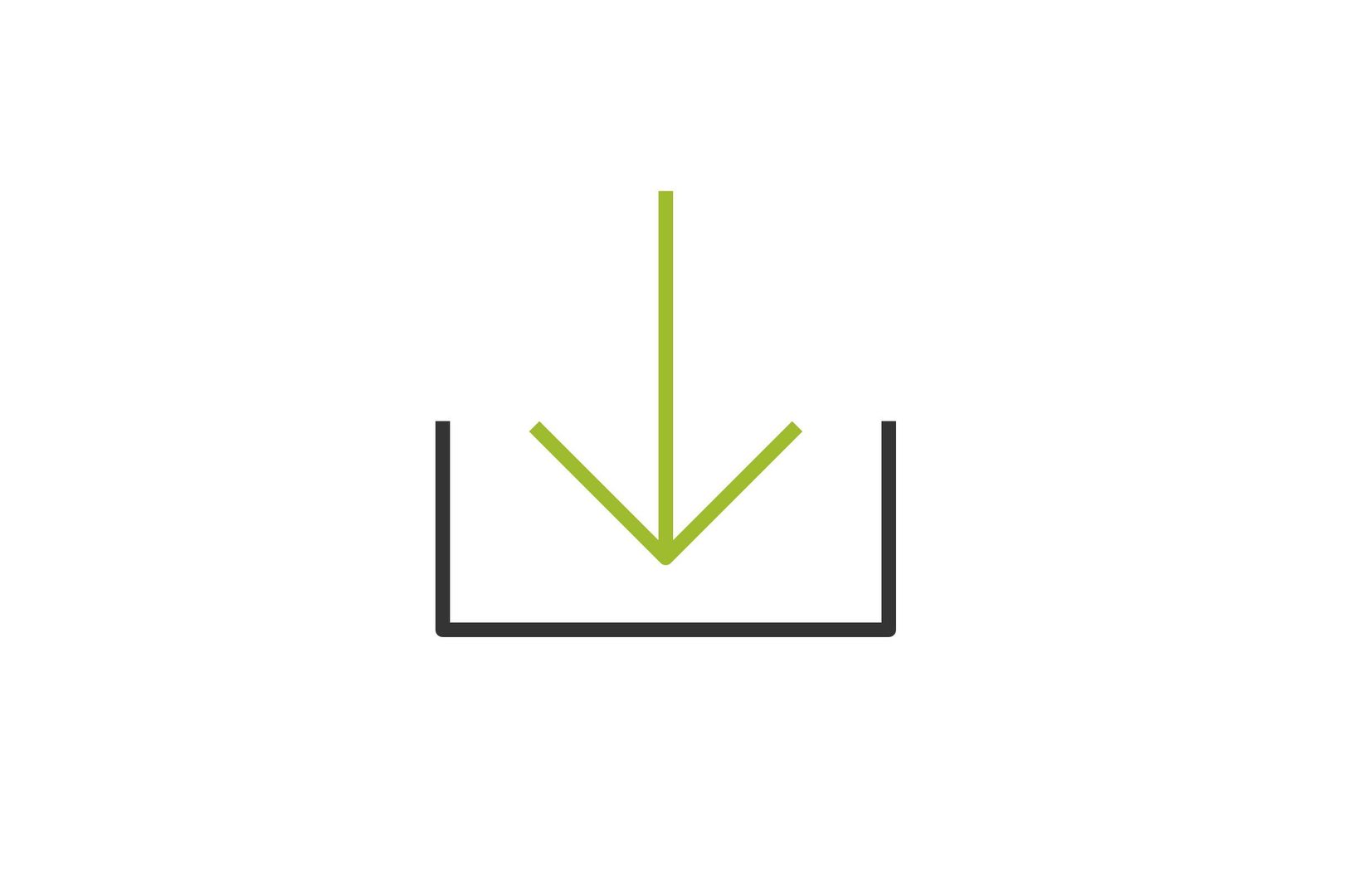Happy Birthday EEG! 25 Years - 25 Facts
On April 1st, 2000, the Renewable Energy Sources Act (EEG, Erneuerbare Energien Gesetz) came into effect, laying the foundation for the expansion of renewable energy in Germany. In our blog post, we trace the history of the EEG through 25 more or less well-known facts, thoughts, stories, and outlooks related to the EEG.

1. Core Principles: Two central pillars form the core of the EEG: Electricity from renewable energy sources should be preferentially fed into the grid, and operators are guaranteed compensation for a period of 20 years. This was meant to stimulate the expansion of renewable energy. And this plan has definitely succeeded!
2. Expansion Driver: Over the course of 25 years, the share of renewables in Germany's electricity mix grew from around 6% to nearly 60%. Renewable energy is now the most important source of electricity in Germany - led by wind power and photovoltaics, with current shares of 31.5% and 13.8% of annual electricity generation.
3. Democratization: The EEG also shifted the balance of power in the electricity market and ended the monopoly of large energy suppliers: No longer just a few, but millions of decentralized plants now generate our electricity. The Power of Many!
4. Architects: The architects of the law include Hans-Josef Fell, a Green Party member of the Bundestag at the time, Hermann Scheer and Dietmar Schütz (both SPD), and Michaele Hustedt (Green Party). On February 25th, 2000, the law was passed by the red-green coalition under Gerhard Schröder.
5. Forerunner: Interestingly, the idea for the forerunner to the EEG came from a CSU member: Matthias Engelsberger had been in a dispute with the electricity suppliers for several years because the electricity from his family’s hydroelectric power plant was compensated at minimal rates. Together with Wolfgang Daniels from the Green Party, he developed the Feed-in Law, which came into effect on January 1st, 1991, and was valid until the EEG replaced it.
6. Jungle of Paragraphs: While the Feed-in Law only had 12 paragraphs, the EEG in 2023 contains 101 paragraphs, with numerous subsections and around 400 cross-references! A key reason for this: In the newly created market environment, loopholes were repeatedly discovered, which had to be closed through revisions. For example, due to higher subsidies for rooftop installations, a building boom occurred - suddenly, a shed was built and the plant was placed on top. To prevent such excesses, many regulations were later made clearer, but also more extensive.
7. Reforms: Over its 25 years, the EEG underwent numerous reforms, with nine of them so extensive that the EEG was defined as a new version with the corresponding year. In addition, there were numerous transitional regulations specifying which norms from the last version remained valid. Along with the large number of paragraphs, the many side laws, and the regulations from the Federal Network Agency, this is one reason for the law's high complexity, which even seasoned lawyers sometimes find challenging.
8. Export Success: The Feed-in Law is considered the world’s first law to regulate the compensation for renewable energy. But it was not the only one! To date, over 100 countries worldwide have adopted the model. After the Fukushima disaster, Japan and China also adopted regulations for renewable energy feed-in and compensation, based on the EEG.
9. Power Trading: With the EEG 2012, power trading was introduced through the market premium model. This meant that renewable energies, like conventional electricity, would be traded directly on the electricity exchange. A crucial step for market integration and the realization of the energy transition. Because the market-driven incentive of power trading makes the generation of electricity from renewable energy more predictable. By the way, this was also a milestone for companies like Next Kraftwerke, as this step created the business model for the German “Direktvermarktung”. With EEG 2014, the exchange trading of renewable energy became mandatory for most new plants over 100 kW.
10. EEG Auctions: Since the EEG 2014, the focus has shifted to competition instead of flat-rate subsidies! Auctions are now used to define expansion volumes for different technologies and award these to the lowest bidders. In 2014, this applied initially only to larger PV installations. With EEG 2017, auctions were also introduced for onshore wind energy, additional PV segments, and biomass.
11. Innovation Auctions: A special form of auction that was first held in 2020: These auctions aim to support combinations of plants - especially those involving renewable energy technologies and storage systems. The goal of the innovation auctions is to better utilize the grid infrastructure, absorb the peak loads of photovoltaics and wind, and stabilize the electricity grid.
12. Cost Reduction: Although some may still not believe it: Solar and wind energy are now the most cost-effective form of energy supply. This is a remarkable development when you look at the funding rates from the early years: In the first EEG, solar subsidies were still 99 pfennig per kilowatt-hour! Since February 1st, 2025, for example, the feed-in tariff for systems between 40 and 100 kWp is 5.62 ct/kWh for partial feed-in and 10.56 ct/kWh for full feed-in. In 2024, the costs of electricity for ground-mounted PV systems ranged between 4.1 and 6.9 ct/kWh.
13. Innovation Driver: The high subsidy rates in the early years were certainly justified: They created the conditions for innovations and technological developments. For example, the average power per solar module unit rose over the years from about 80 watts to 450 watts peak, to name just one example.
14. Degression: A reduction in costs was expected and built into the EEG from the start. On the one hand, the costs of technologies were to be evaluated and adjusted every few years. On the other hand, annual degression rates were introduced, percentages by which the compensation for new plants would be reduced. This idea also worked as a smart driver for expansion. Because of the degression, investments were made immediately, rather than waiting for technology to become cheaper.
15. Negative Electricity Prices: With the significant expansion of volatile energy sources, a new and somewhat problematic phenomenon emerged: Negative electricity prices occur more frequently due to solar peaks on sunny days. These arise when more electricity is generated than can be consumed. The EEG regulations regarding negative prices, which encourage system-friendly behavior, such as shutting down or storing, have been continuously tightened in the latest EEG revisions. With the "Solar Peak Law" of 2025, subsidies for negative prices were even completely discontinued: Newly commissioned PV plants will no longer receive compensation from the first negative quarter-hour. The corresponding periods are added after the regular EEG support ends.
16. Electricity Market: Just like the technologies, the electricity market has changed under the influence of the EEG and the expansion of renewables - it could be said that it has developed into its current form only because of the EEG. In intraday trading, which was introduced in 2010, electricity quantities are traded continuously in hourly, 30-minute, or 15-minute products. Due to the increasing share of renewable energy, lead times have been steadily shortened in recent years. Today, traders can place orders up to five minutes before the delivery quarter-hour and thus balance deficits or surpluses in their own balancing group. Additionally, short-term trading can be used to feed electricity from flexible plants into the grid based on demand and thus achieve higher revenues.
17. Balancing Power: When deficits can no longer be balanced through electricity trading, balancing power comes into play. Although this market existed before the EEG, capacities were only provided by conventional power plants. Back then, Next Kraftwerke initiated a procedure with the Federal Network Agency to make participation in this market possible for smaller, decentralized plants. And thus successfully influenced the legislation. Since 2012, the EEG has stipulated that renewable energies, bundled through virtual power plants, may also participate in the balancing power market.
More on the topic
18. End of EEG Funding: The EEG funding is generally limited to 20 years. This limitation began with the EEG 2000, so that by the end of 2021, the first plants fell out of funding. Those who were already supported earlier had the benefit of a slightly longer funding period.
19. Follow-up Funding: How things continue for plants over 20 years old is regulated differently depending on the technology: PV operators, for example, can continue to feed their electricity into the public grid and receive follow-up compensation from the grid operator. Alternatively, they can switch the plant to self-consumption or market the electricity through other forms of power trading. Flexible, grid-friendly biogas plants can apply for a 10-year follow-up funding once the initial funding period ends. Since the operating costs for biogas plants are usually higher than market prices, they could not continue to operate economically without funding.
20. EEG Levy: The EEG levy, which financed the expansion of renewables, was until 2022 a fixed part of the electricity price paid by end consumers to electricity suppliers. To relieve consumers during the energy crisis, the EEG levy was abolished. Initially, the financing continued through the Climate and Transformation Fund, and since 2025, renewable energy funding has been fully paid for by the federal budget.
21. Clawback: While the EEG ensures that operators always received compensation through the sliding market premium when market prices were below their guaranteed remuneration, it was not originally intended that there could be an obligation to repay in the opposite direction - that is, if electricity prices on the market are higher than the compensation. During the energy crisis, with extremely high electricity exchange prices, the topic of "clawback" was added to the agenda. The Electricity Price Brake Act decided that surplus profits from a defined period must be repaid to the grid operators to relieve end consumers. Subsequently, European law determined that countries must introduce two-sided "Contracts for Difference (CfD)" by 2026, which must include both downside protection and upside clawback.
22. Clearinghouse: This special instance created by the EEG has often provided quick clarity and agreements without the need for courts. The Clearinghouse is there to interpret the EEG and the KWKG, either through an advisory and recommendation process, which defines how specific rules in the EEG should be understood, or through various mediation procedures, in which binding decisions can be made for all parties and grid operators. The decisions in advisory and recommendation procedures remain in effect until a contrary ruling by the Federal Court of Justice.
23. Mandatory Remote Control: Since EEG 2014, plants in power trading must be remotely controllable so that they can be regulated by the power trader. From today's perspective, a very sensible measure that brought about a substantial digitalization boost. However, today the issue of remote control has become a bureaucratic task, which has even been tightened recently to the extent that power traders must report to grid operators if customers fail to comply with their obligations within a specific period. From our perspective, this is an unnecessary bureaucratic burden since traders now place great value on the controllability of plants, and the market already regulates this issue, while small plants could be exempt from this obligation.
24. Approval Procedures: A particularly tedious issue in the wind energy sector. Nowadays, it often takes up to nine years for a new wind turbine to be approved, a deterrent factor for investors in the field, which has also led to stagnation in expansion at times. However, the EEG itself is not primarily responsible for these high demands. Various other laws and regulations, from building law to tax law to the Emission Protection Act, must be adhered to. There is room for improvement here.
25. Future of the EEG: The transformation of the energy system is in full swing. By 2030, renewables are expected to cover at least 80% of the German electricity consumption, with 115 gigawatts of onshore wind energy and 215 gigawatts of photovoltaics to be installed by then. With this significant increase in volatility in the grid, the entire market environment will also need to evolve. So, we will likely need not only 15-minute products in electricity trading but perhaps 5-minute products. The electrification of many areas of life is also continuing: electric cars, heat pumps, smart meters - all these electricity consumers must be sensibly integrated into a future market design. So, we can assume that the EEG will not be retired after its 25 years. There will still be much to regulate!
More information and services



